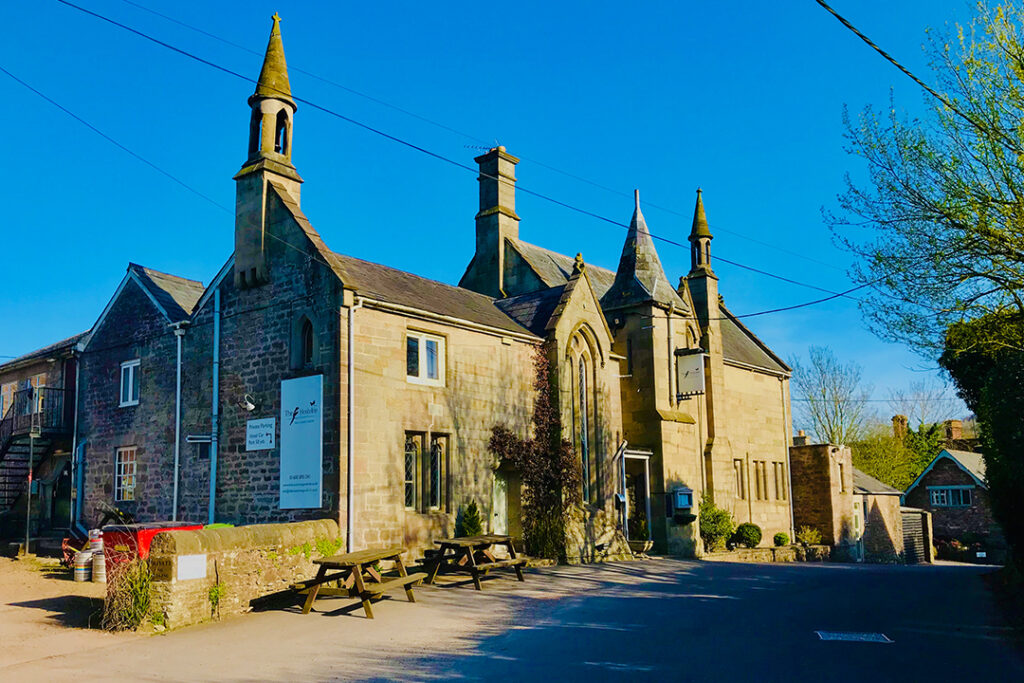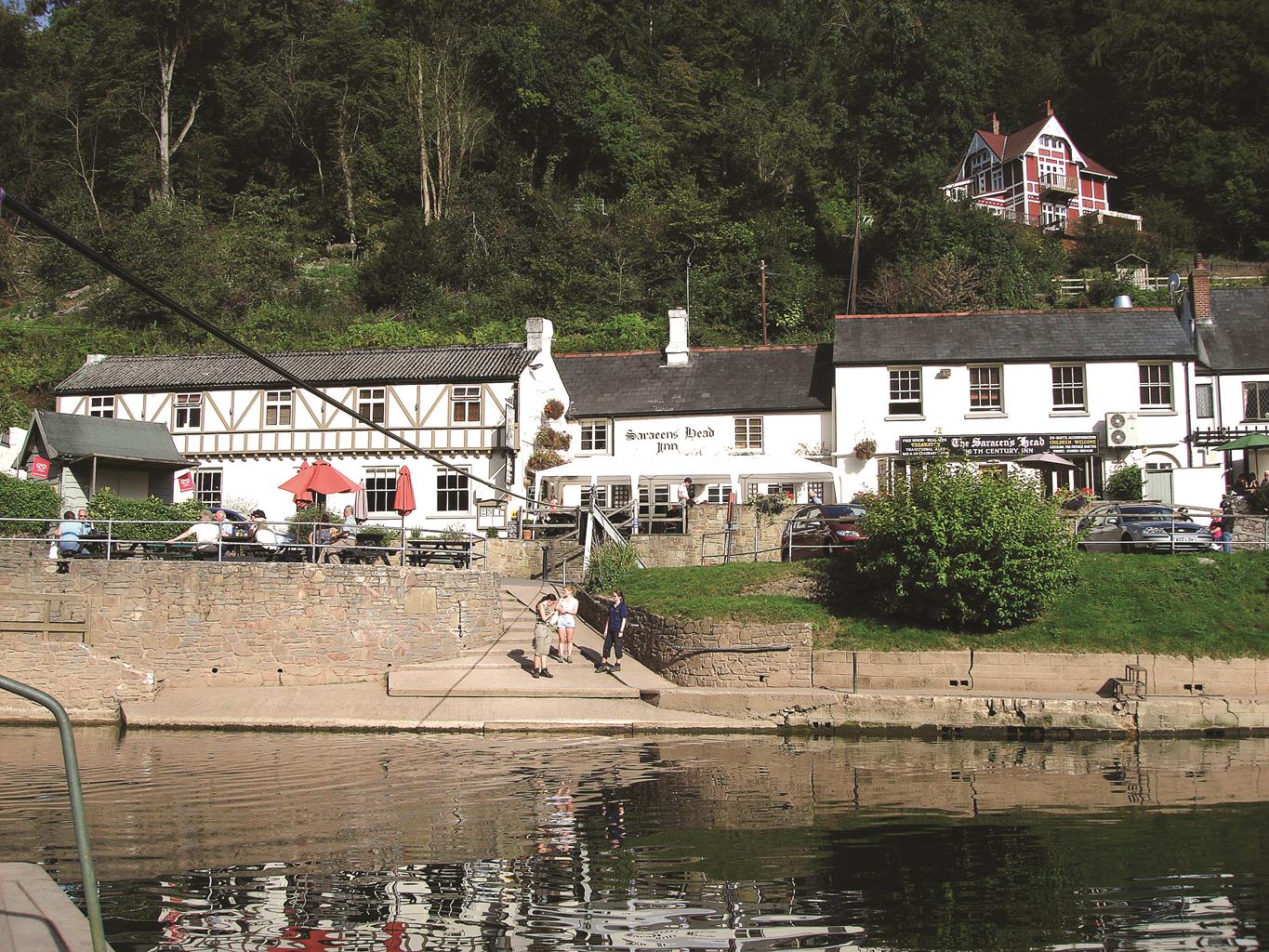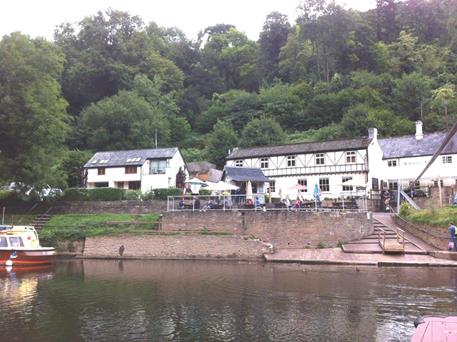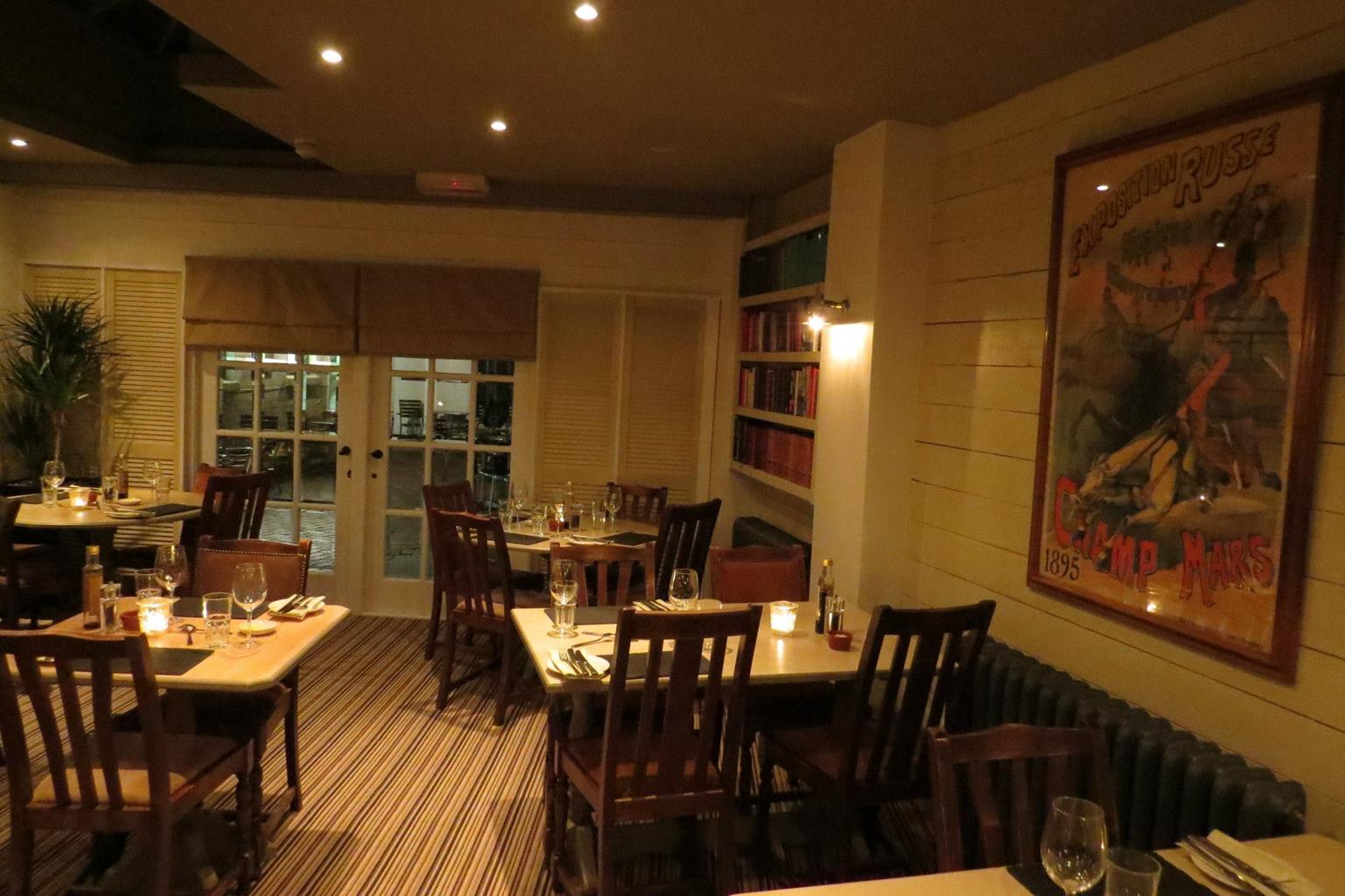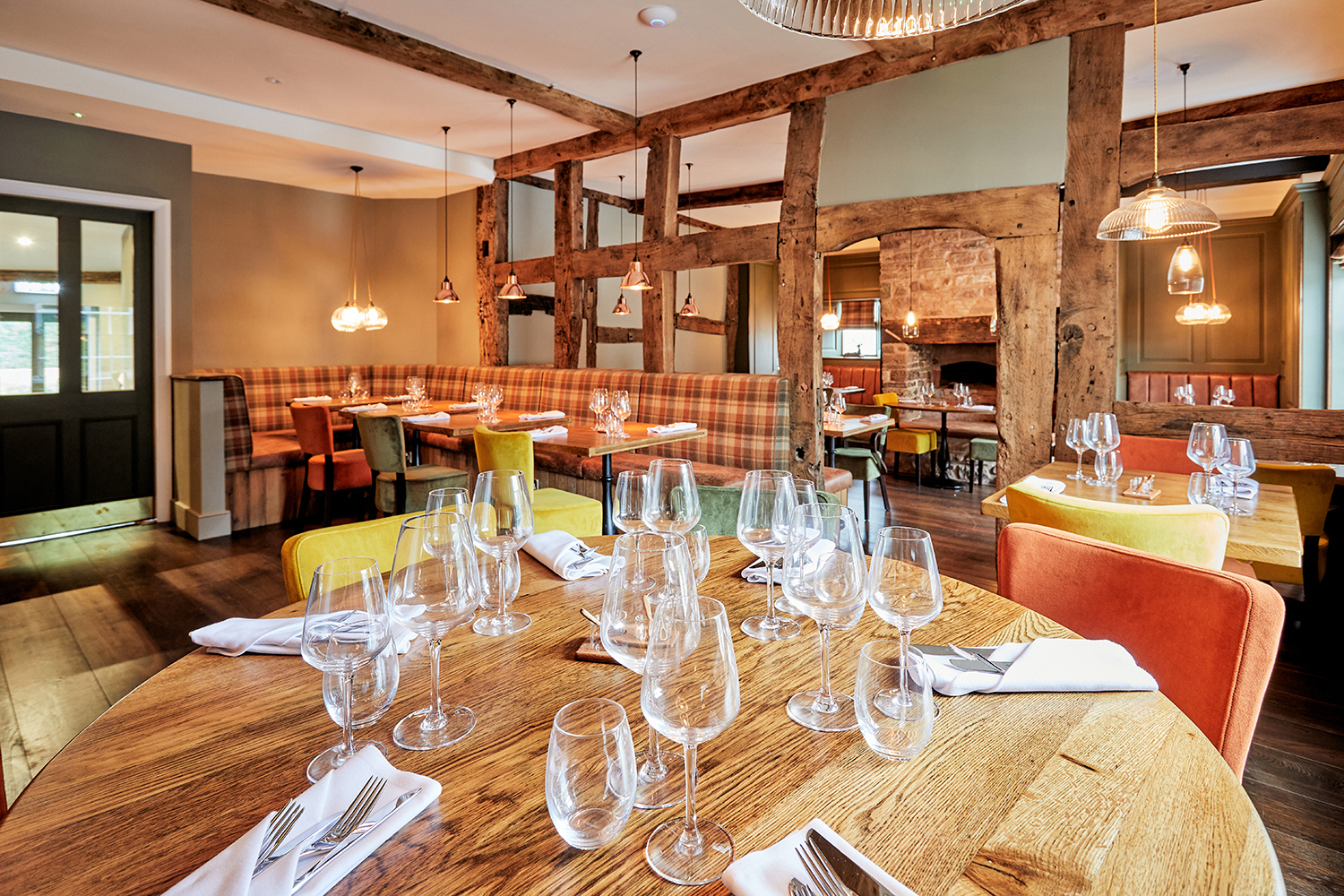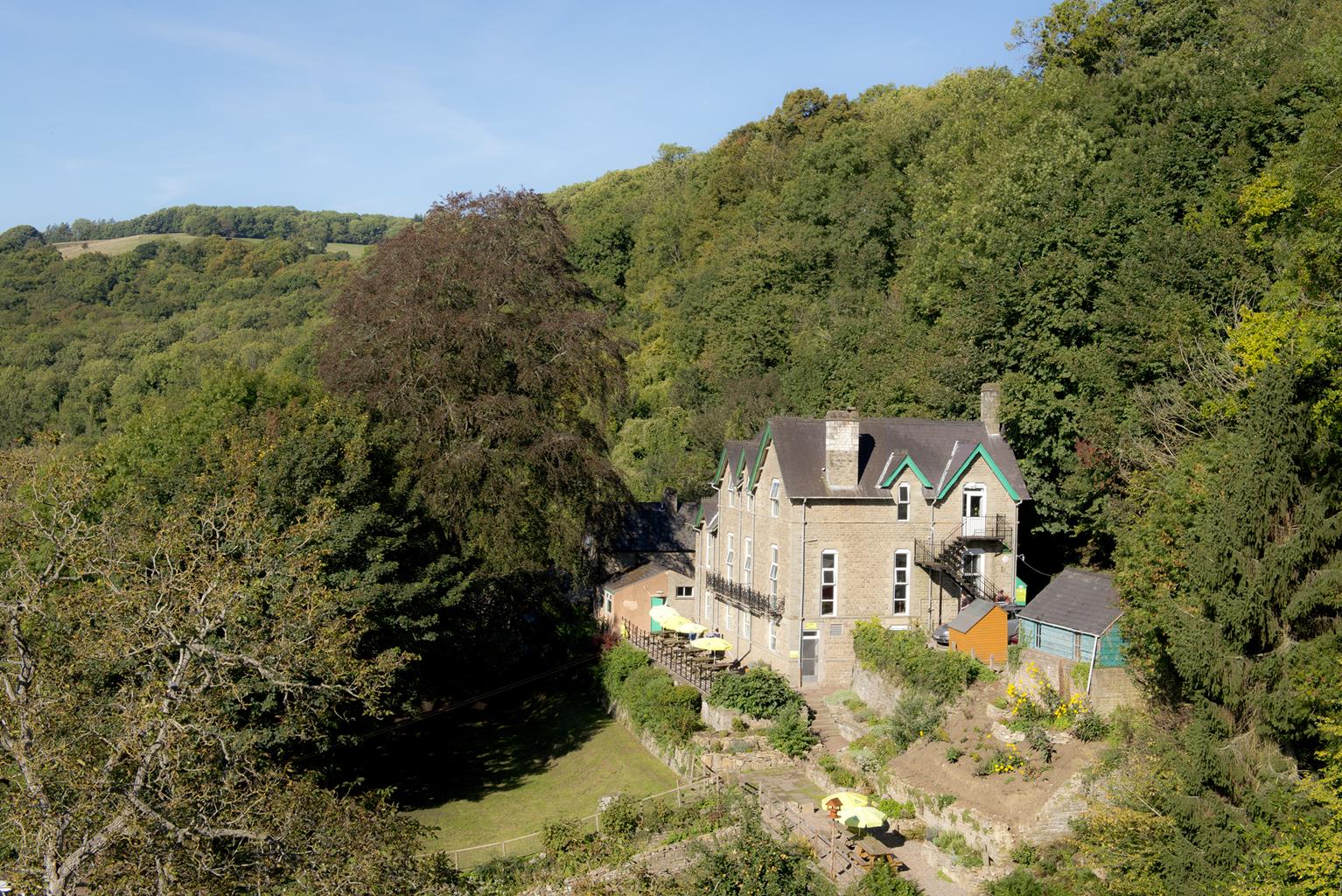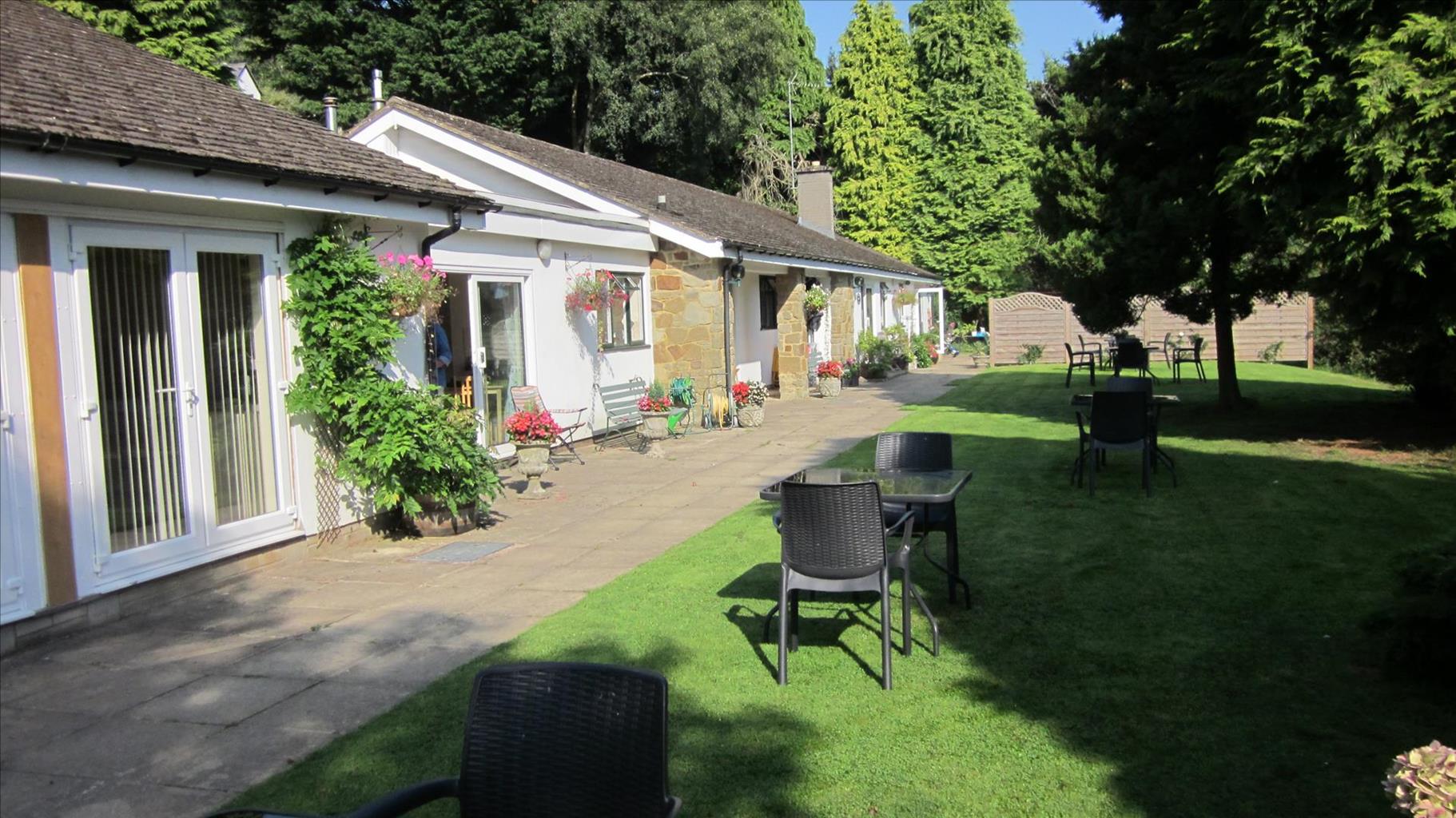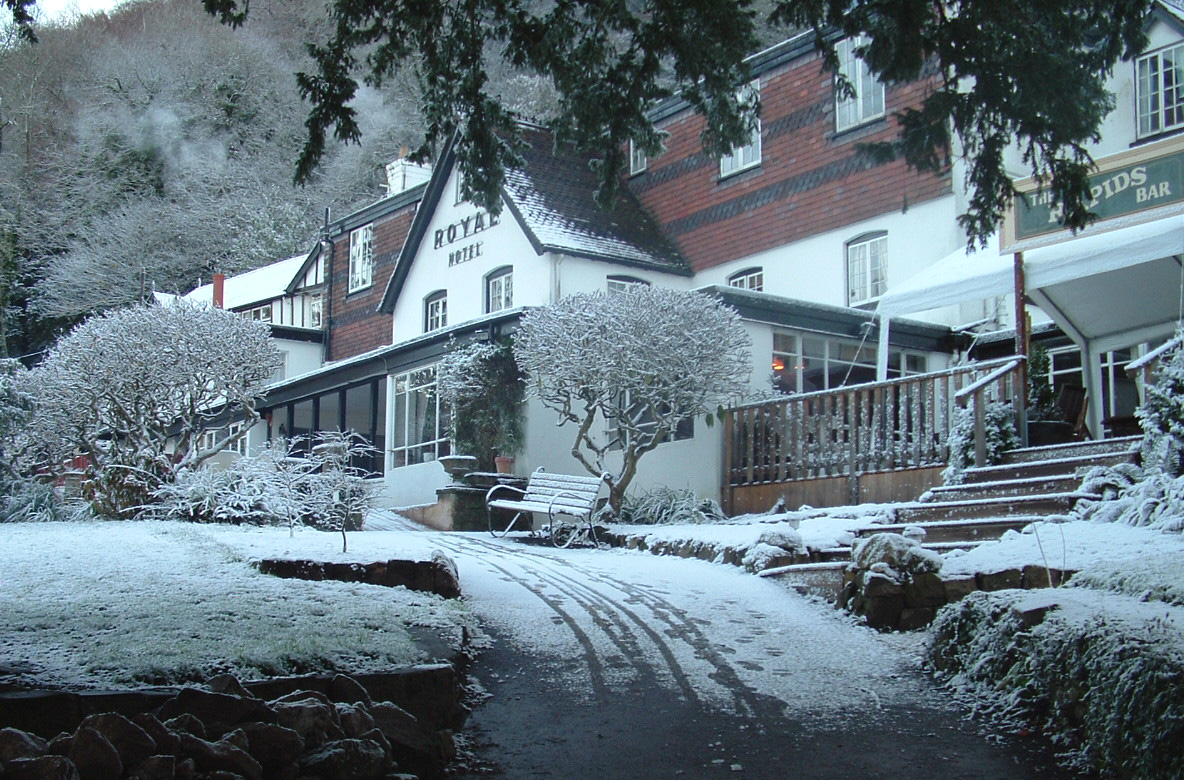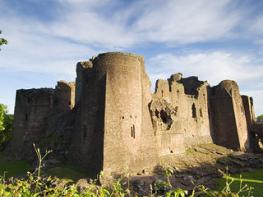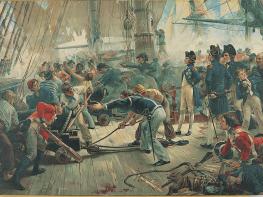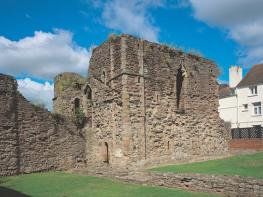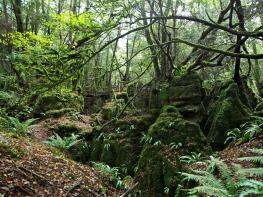The Hostelrie is an early Victorian conversion of a previous inn with a romantic gothic style in…
Over Coppet Hill

8.5 miles (13.7kms)
About the walk
The name ‘Coppet Hill’ is a fairly recent introduction to a hill with an Iron Age presence. In the 13th century the hill was named, ‘Coppyngwode’ and, latterly, ‘Coppet Wood Hill’, each one referring to its tree-lined status and use as a coppice.
Once belonging to the manor that is now the village of Goodrich, Coppet Hill has also received Roman interest, with two known settlements either side of the main ridge. Both a hoard of Roman coins and a bronze dodecagon gaming piece have been found on the Hill. Born in 1768, Joshua Crystall began work as a china painter in the Staffordshire Potteries but found the work too repetitive and finally gained admission to the Royal Academy School of Art. In 1805 he was a founding member of the Society of Painters in Watercolours and gave the first public exhibition of his works; latterly he became the first President of the Society. He moved to a house in Goodrich at the foot of Coppet Hill in 1822 and spent many happy years there painting local residents in rustic scenes, such as ‘A Cottage on the side of Symond’s Rock’ and ‘Coppet Hill Fern Burners’.
The Courtfield Estate owns much of the land through which the walking route follows. Having belonged, in the main, to the Vaughan family since the 17th century, the estate and farm is run on sustainable, organic principles, and has won awards for its outstanding contribution to conserving and enhancing the landscape.
A herd of organic Hereford cattle often graze the large areas of watermeadows through which the walk passes, living outdoors all year round and entirely pasture fed. Originally from Herefordshire, the Hereford is one of Britain’s finest native beef breeds and is renowned for the excellent quality of meat it produces. The breed has been exported around the world because of this. Its characteristic red with a white face makes the breed very distinctive. Some of the Herefords at the Courtfield Estate are of the British poll Hereford strain, a hornless variant known for its docile temperament.
Walk directions
Walk down Castle Lane to the village and turn left towards Courtfield and Welsh Bicknor. Follow the lane to a bridge across the B4229.
By a fingerpost to Kerne Bridge, cross a stile on the left and descend steps to the main road. Follow it right past Flanesford Priory, founded by Augustinian monks in the 14th century. Today, the restored ruin is run as a self-catering accommodation. Immediately before the bridge, built in 1828, drop down steps on the right and pass through a small metal gate to follow a signposted riverside path at the edge of a field. At the far end, pass into trees and climb a few steps, the way shortly resuming beside the Wye.
Ignore a later path signed off right back up to Goodrich and continue along the riverbank. In passing, notice the stone abutments on both banks, all that remains of a demolished bridge that carried the Ross and Monmouth Railway. The line opened in 1873, crossing the river three times and passing through two tunnels. Carry on beside the river through Thomas Wood emerging at the far side to continue at the edge of long, waterside meadows. Eventually the river sweeps into a tight bend and passing through a gap in a hedge, continue by the river.
Keep following the river – the border between Herefordshire and Gloucestershire – through Coldwell Wood by the river. Just beyond a reclining willow. Strike up beside the line of trees to a stile at the edge of the wood and follow a steadily climbing path along the ridge of Coppet Hill. Many of the trees were formerly coppiced to produce a regular crop of poles. These were primarily used for charcoal production to fuel the bloomeries of the Forest of Dean’s iron industry. The woodland thins higher up, opening views to the west. Keep right at successive forks and then ignore a crossing, before tackling a final short pull to the folly at the top of the hill.
Walk on beyond, bearing left at a fork to descend past the trig column. The narrowing path steepens into more trees. Watch for successive waymarks guiding you left and then right, the path becoming stepped as it winds below a rock outcrop to meet a junction of lanes. Carry on downhill, shortly reversing your outward steps to Goodrich.
Additional information
Quiet lanes, riverside meadows, woodland paths
River valley and hill top views
Dogs are welcome in the castle grounds and elsewhere but should be kept on a lead.
OS Explorer OL14 Wye Valley & Forest of Dean
Goodrich Castle pay-and-display car park open daily; free for English Heritage members
None on route
WALKING IN SAFETY
Read our tips to look after yourself and the environment when following this walk.
Find out more
Also in the area
About the area
Discover Herefordshire
Herefordshire is split in two by the River Wye which meanders through the county on its way to the Severn and the sea. Largely rural, with Hereford, Leominster, and Ross-on-Wye the major towns and cities, its countryside and ancient villages are the county’s major asset.
Visitors can take advantage of a number of the trails which will guide them through areas of interest. Those especially interested in historic village life should try the Black and White Village Trail, which takes motorists on a 40-mile drive around timber-framed villages from Leominster to Weobley (established in the 17th century and known as a centre of witchcraft in the 18th), Eardisley (where the church boasts a 12th-century carved font), Kington, Pembridge and others. Other trails include the Mortimer Trail, the Hop Trail and the Hidden Highway, which goes from Ross-on-Wye to Chester. Hereford has a small Norman cathedral, which has a great forest of pink sandstone columns lining the nave. Inside is a chained library, a 13th-century Mappa Mundi (map of the world) and one of only four copies of the 1217 version of the Magna Carta.
Nearby stays
Restaurants and Pubs
Nearby experiences
Recommended things to do
Why choose Rated Trips?
Your trusted guide to rated places across the UK
The best coverage
Discover more than 15,000 professionally rated places to stay, eat and visit from across the UK and Ireland.
Quality assured
Choose a place to stay safe in the knowledge that it has been expertly assessed by trained assessors.
Plan your next trip
Search by location or the type of place you're visiting to find your next ideal holiday experience.
Travel inspiration
Read our articles, city guides and recommended things to do for inspiration. We're here to help you explore the UK.

